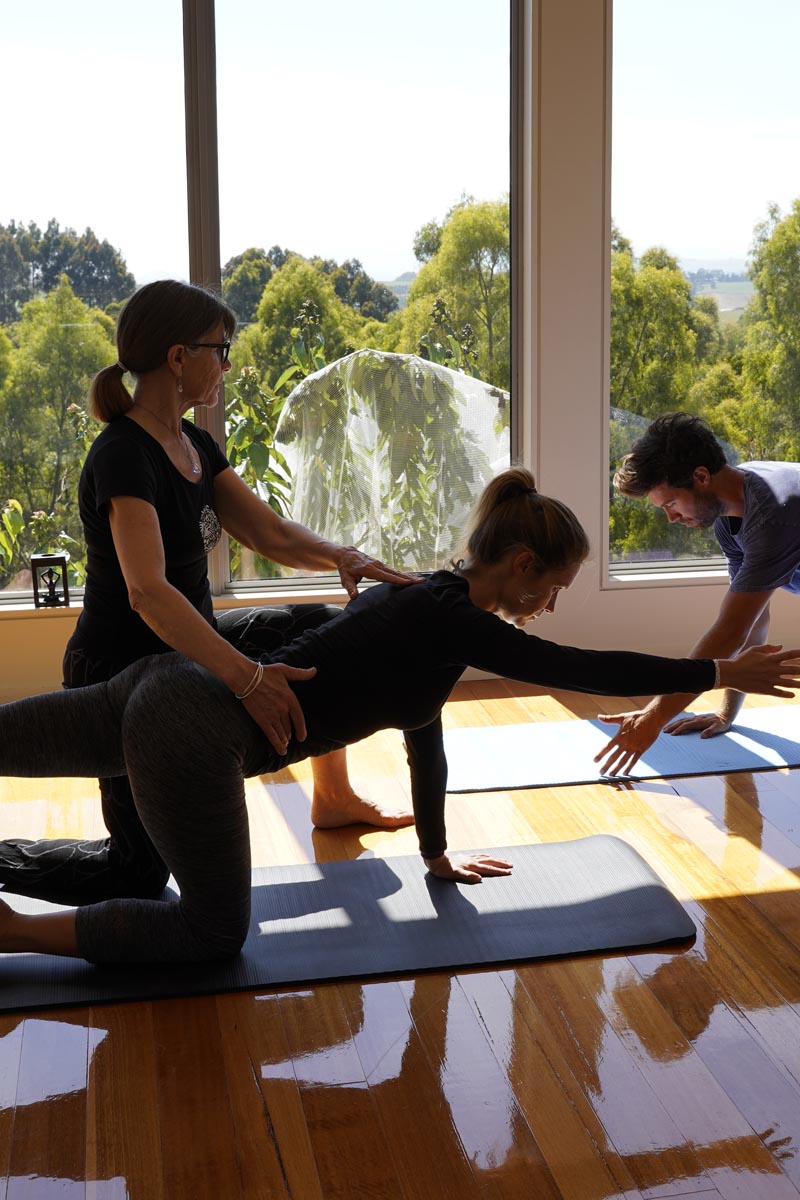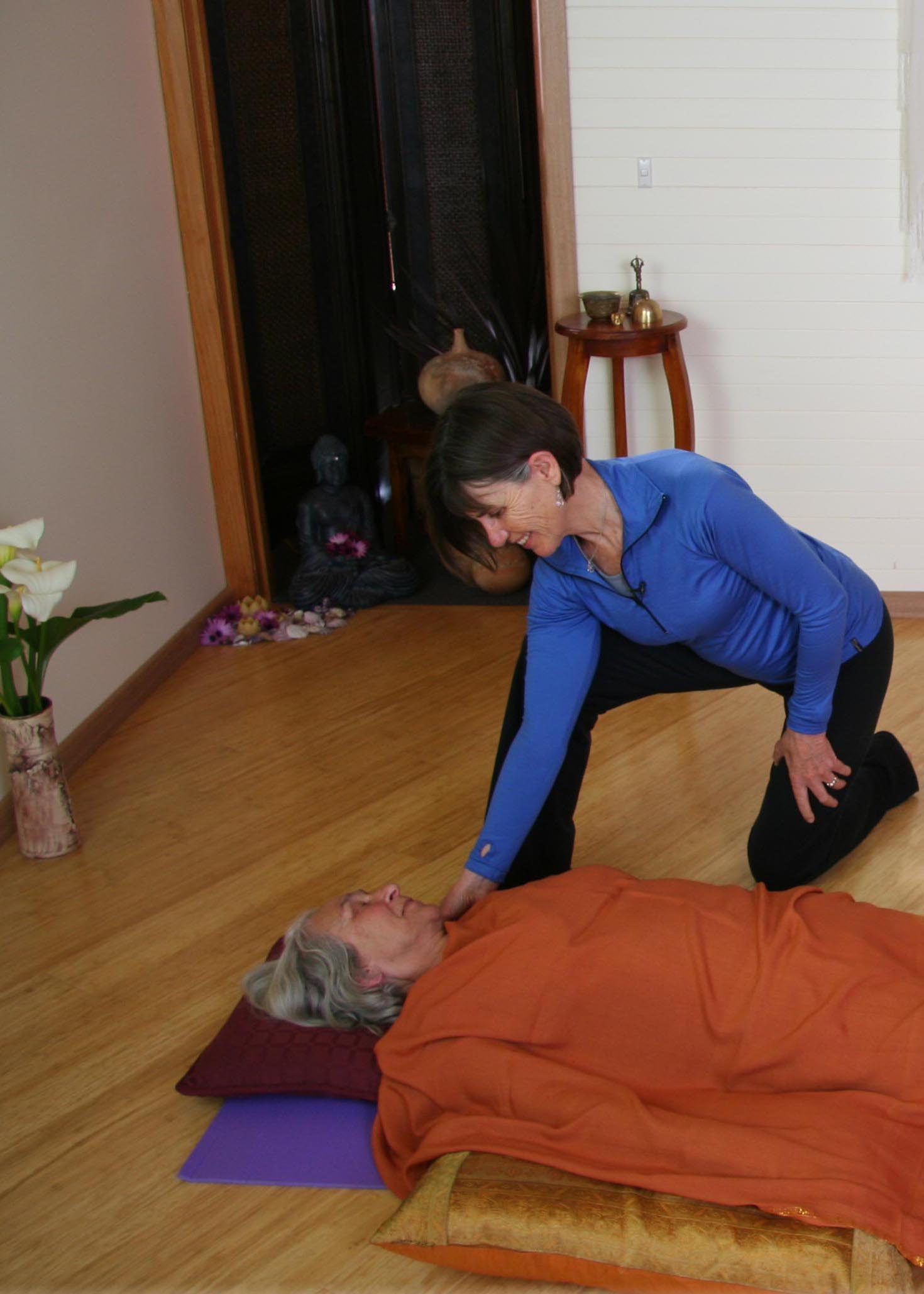
Yoga
I have been teaching yoga for more than 25 years to general classes, and to people with many health conditions, whether in general or specialised classes. Each class begins with settling and breath awareness; then we do the postures, which I adapt for different individuals depending on their need; and we may then finish with a relaxation or meditation.
Yoga is a holistic practice based on ancient teachings and texts such as Hatha Yoga Pradipika, The Bhagavad Gita and the Yoga Sutra of Patanjali. Some of the philosophies it comes from are Vedanta, Samkhya and Tantra. However, it has no religion attached to it, and people of any Faith can practise it.
Throughout these teachings is the idea that our true inner nature is always present and accessible, irrespective of our condition. In this way, yoga is a very positive philosophy. The philosophy also states that over time, and by doing the practices of yoga, we can change detrimental habits and create a more balanced self.
Irrespective of our condition, there will always be a practice of yoga we can do, whether it is physical postures, breathing, meditation or relaxation. When we do yoga we bring awareness to every practice. An authentic yoga practice will result in balance of our physical, energetic and mental aspects of our self, so that we can function in an improved way with our self and those with whom we interact. In other words it develops our bio-psycho-social functioning.
This is probably the reason for its current popularity – there is literally a style of yoga that can be adapted to each individual. For example, yoga can be suitable for people in all walks of life, at all ages and with all conditions; it can provide stress relief or energy, improved ability to concentrate or quicker response to physical trauma or surgery. It can also improve strength, range of motion and balance. An increasing evidence-base supports the health-related benefits that can occur from a regular yoga practice for most health conditions.
Pilates
I have been teaching Pilates at all levels now for more than 20 years. My focus is on creating core stability and improved movement patterns, which can improve strength, range of motion and balance. I take particular care to check each person is engaging the targeted muscles in each class.
In the therapeutic setting, Pilates is excellent for creating stability, improving balance, readjusting muscle imbalances resulting in improved physical functioning. It focuses on such principles as concentration and alignment in conjunction with the breath. The specific low impact exercises in Pilates are progressive and individualized to ensure effective muscle firing and safety for each individual.
With a focus on the areas of the body that require stabilization such as the pelvis, trunk and shoulder it re-creates good posture and good postural awareness which also carries over to how people move in their daily life. Elite athletes find it improves their performance, whilst people with back pain find it gradually reduces the pain. It can be adapted and helpful for people with osteoporosis or reduced strength or range of motion from surgery or injury.
Sometimes different equipment such as balls and stretchy straps are used to enhance the practice. Generally most people will find an improvement in their day-to-day movement patterns and balance and many comment that they feel refreshed and renewed after a session.


Yoga Therapy
I have been committed to yoga therapy in Australia since my initial training in 1994 in Great Britain and in taking on the role of the President of the Australasian Association of Yoga Therapists (AAYT) to bring in Standards of qualification in this field. I have been training yoga teachers to become yoga therapists in Melbourne, Sydney, Brisbane and Gold Coast. I have also several yoga therapy courses accredited with AAYT.
Yoga Therapy aims to enable an individual to improve their own health using Yoga practices. Yoga Therapy can be in groups, for example, Yoga for Breast Cancer; or given in a one-to-one consultation. An accredited Yoga Therapist is an experienced Yoga Teacher with qualifications, specialised skills and knowledge in the application of Yoga within a therapeutic setting.
If you have a yoga therapy session you will fill in a client information form, and be given an individualised practice using any or many of the tools of yoga such as postures (asana), breathing (pranayama), relaxation and meditation (dharana and dhyana). You may also be given hand gestures known as mudra or a mantra. Practices will be tailored especially for your circumstance and your practice will be monitored and changed when necessary.
There is an increasing body of sound scientific evidence for the benefits of yoga therapy whether for physical or mental conditions, for healthy or ill populations. Yoga therapy is now incorporated in medical and wellbeing centres around Australia and abroad and will continue to grow as its benefits become more well known.
